Bradgate House & The Murderous Ambition of a Tudor Family
Perhaps there was never such a sad and desolate figure in Tudor history as the diminutive Lady Jane Grey, the child unwillingly groomed and manoeuvred towards the throne of England by her ambitious and self-serving parents.
It was a game of political chess in which Jane was the principal pawn – and which would leave four people dead at the hands of the axe-man. Jane was executed on 12 February 1554, following her reluctant involvement in the attempted coup aimed at placing a Protestant queen on the throne after the death of Edward VI. To commemorate this anniversary and her life, in this blog post, we will roll back time to visit the family home of Bradgate House, where Jane lived during her years before the family relocated their power base to Sheen, on the banks of the River Thames and close to the royal court.
Bradgate House: A House of Ambition
Bradgate Park was one of two parks belonging to the Manor of Groby. Its history can be traced back to at least the eleventh century when an area of land encompassing what is now Bradgate Park was given to a loyal compatriot of William the Conquerer, Hugh de Grentmesnil, who fought with William at the Battle of Hastings.
Our story, though, really begins in the mid-fifteenth century, when the estate’s owners, the Ferrers family, did a spectacular bit of fortuitous social climbing. This started when the younger son of Reginald Grey, 3rd Baron Grey de Ruthyn, married the heiress Elizabeth Ferrers in 1427. Their son, John Grey, made the spectacular match with Elizabeth Woodville of Grafton in Northamptonshire.
Of course, the family’s fortunes were transformed by Elizabeth’s later marriage to King Edward IV. It would be her eldest son from her first marriage to John Grey, Thomas, who would establish a new house at Bradgate, the power base of the Grey family during the first half of the sixteenth century.
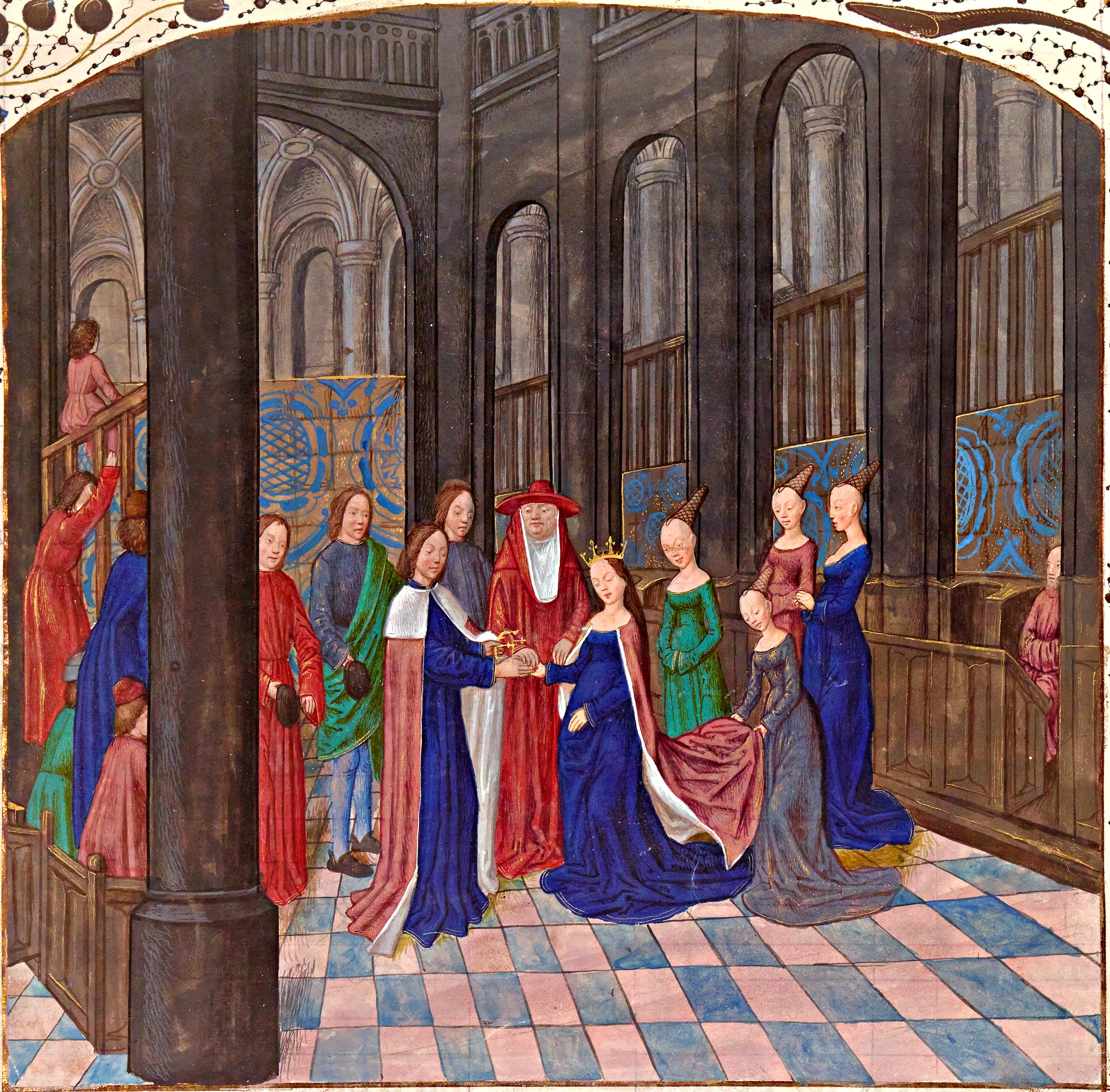
The Grey family was now closely related to the royal family. When the Wars of the Roses ended with Henry VII’s decisive victory at the Battle of Bosworth, Thomas Grey found himself as the new 1st Marquess of Dorset, half-brother to the new queen, Elizabeth of York, and so essentially brother-in-law to Henry VII, and ultimately uncle to the princes and princesses of the House of Tudor.
Essential to any upwardly mobile Tudor courtier was a house to reflect their wealth and status. To begin with, Thomas began constructing a home at the old manor of Groby around 1488. However, as John Leland states in his Itinerary, whilst Thomas Grey laid the ‘foundations and walls of a great house’ there, he left them half-finished, abandoning work partway through. Subsequently, and for unknown reasons, he commissioned the building of a new house at an entirely virgin site within the pale of Bradgate Park – and thus, Bradgate House was born.
Sadly, Thomas could not make much headway with his new project as he died in 1501, having spent various amounts of time in prison or exile. His Yorkist blood never sat entirely easily with a suspicious Henry VII. Thomas’ son, another Thomas, the 2nd Marquess, fared somewhat better, picking up the building of Bradgate where his father had left off. He gained the friendship of the young Henry VIII, and so, during the early part of Henry’s reign, the 2nd Marquess’ star rose even higher at court, part of the select ‘band of brothers’ who accompanied the king in his many energetic and courtly pursuits.

With favour came wealth, and so this Thomas was able to make significant progress in completing the work begun by his father, such that, by the time of his death in 1530, Bradgate House was probably largely completed. But what of this house? Today, it lies in ruins, a shadow of its former glory. But what manor did the Greys of Groby build to symbolise their status and power? What did the home of Lady Jane Grey actually look like?
Bradgate House: A Tudor Riddle
One of the puzzles left behind with the ruins of Bradgate House is how little is actually known for certain about how it appeared in the sixteenth century. Historically, there has been a real paucity of information on the appearance of the original manor built by the Greys. Virtually no documentary evidence from the protracted building campaign survives – and one source describes the ruins and evidence above ground as being of ‘doubtful value’ (probably on account of later redevelopment obscuring the original layout and utility of the rooms).
What we know is that Bradgate was one of the earliest grand country estates to be built from red brick – a popular trend on the continent. In short order, this trend would be wholeheartedly embraced by the nobility of the day in England – all of whom wanted their houses to reflect not only their wealth but good taste; think Hampton Court, Greenwich Palace, Esher Palace or Compton Wynyates, for example. Brick was expensive – reflecting wealth. Furthermore, it could be variously fired to produce different coloured building materials. This was used to create patterns, such as diapering, on external walls, so brick was decorative and, therefore, greatly valued. By the way, this diamond (diapering) effect can still be seen on what remains of the house today.
Recently, a 5-year archaeology project conducted by the University of Leicester was completed at Bradgate. The dig was an attempt to harvest more detailed and accurate information on the appearance and layout of the original Tudor mansion. It also aimed to answer the question: ‘Are the ruins that survive contemporary to Jane Grey, or do they reflect a later house built after Jane’s family lived there?’
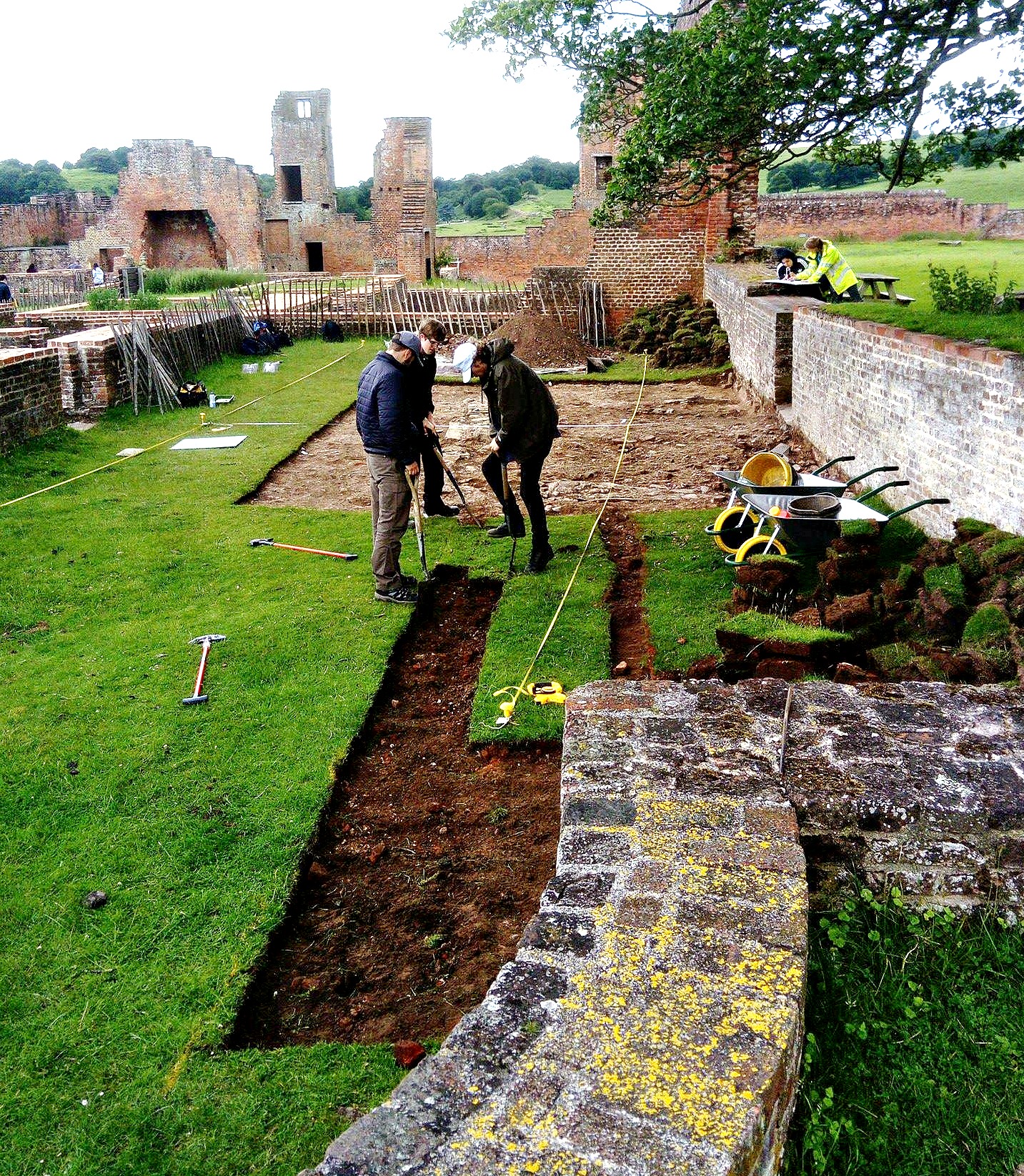
The dig revealed that Bradgate is a complex site with many phases of building works uncovered during the project. In conclusion, though, the house we see today was the one lived in by Jane’s family. If you wish to hear more details about the dig and its conclusions, why not tune in to my podcast, recorded on location at Groby Old Hall and Bradgate Park?
Bradgate House: The Appearance of the Tudor Mansion
Usually, when I write about great houses of the era, I describe buildings arranged around a single or double courtyard (one or two hollow squares). However, this was not so at Bradgate, where the main buildings appear to have been arranged in a ‘U’ shape around a south-facing courtyard. This was also where the main entrance was located.
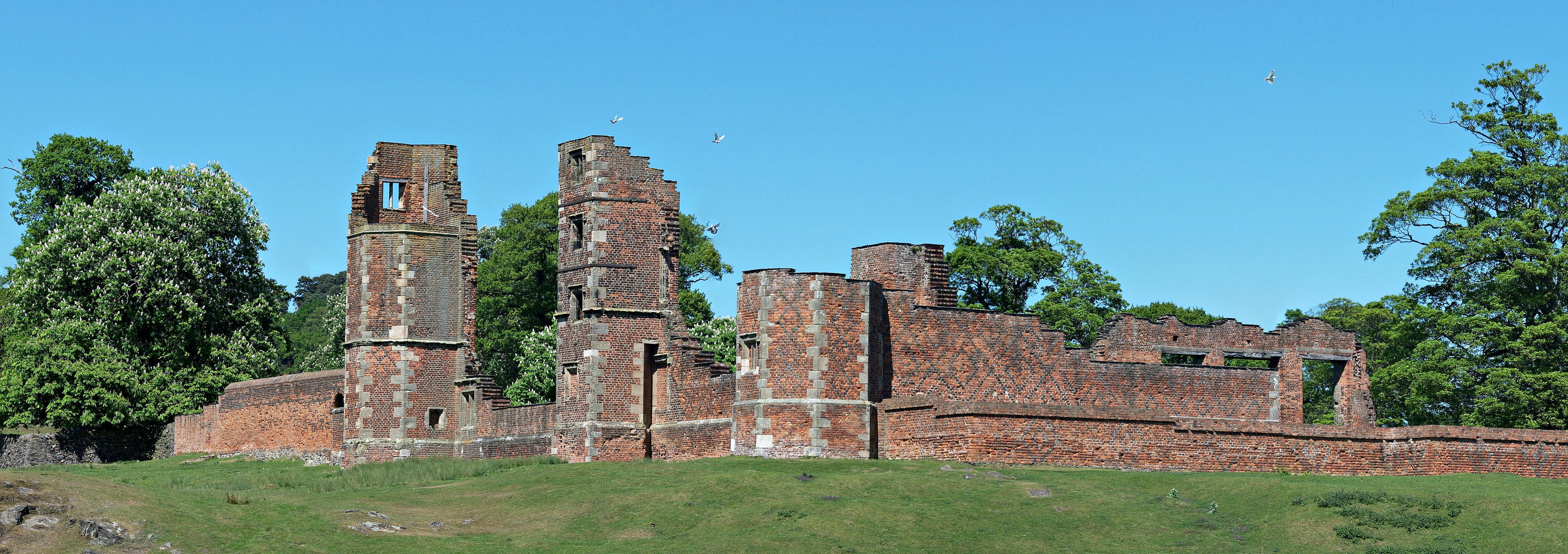
Directly opposite the gate was the great hall (which formed the bottom of the ‘U’ shaped arrangement, part of the north range), with an east wing (on the right) and west wing (on the left), each one flanked by an octagonal tower. There does not currently seem to be any evidence of a great gatehouse or a moat. The latter features were considered defensive and belonging to an earlier age; the Grey’s new house at Bradgate was one of a new generation of buildings, explicitly designed as a comfortable, luxurious family home.
There is a detailed description of the appearance of the early Tudor house in Bradgate House and the Greys of Groby. A Sketch of their History, by John D. Paul. It is so rich with information that I have included the relevant abstract here, in full, along with a floor plan from the book.
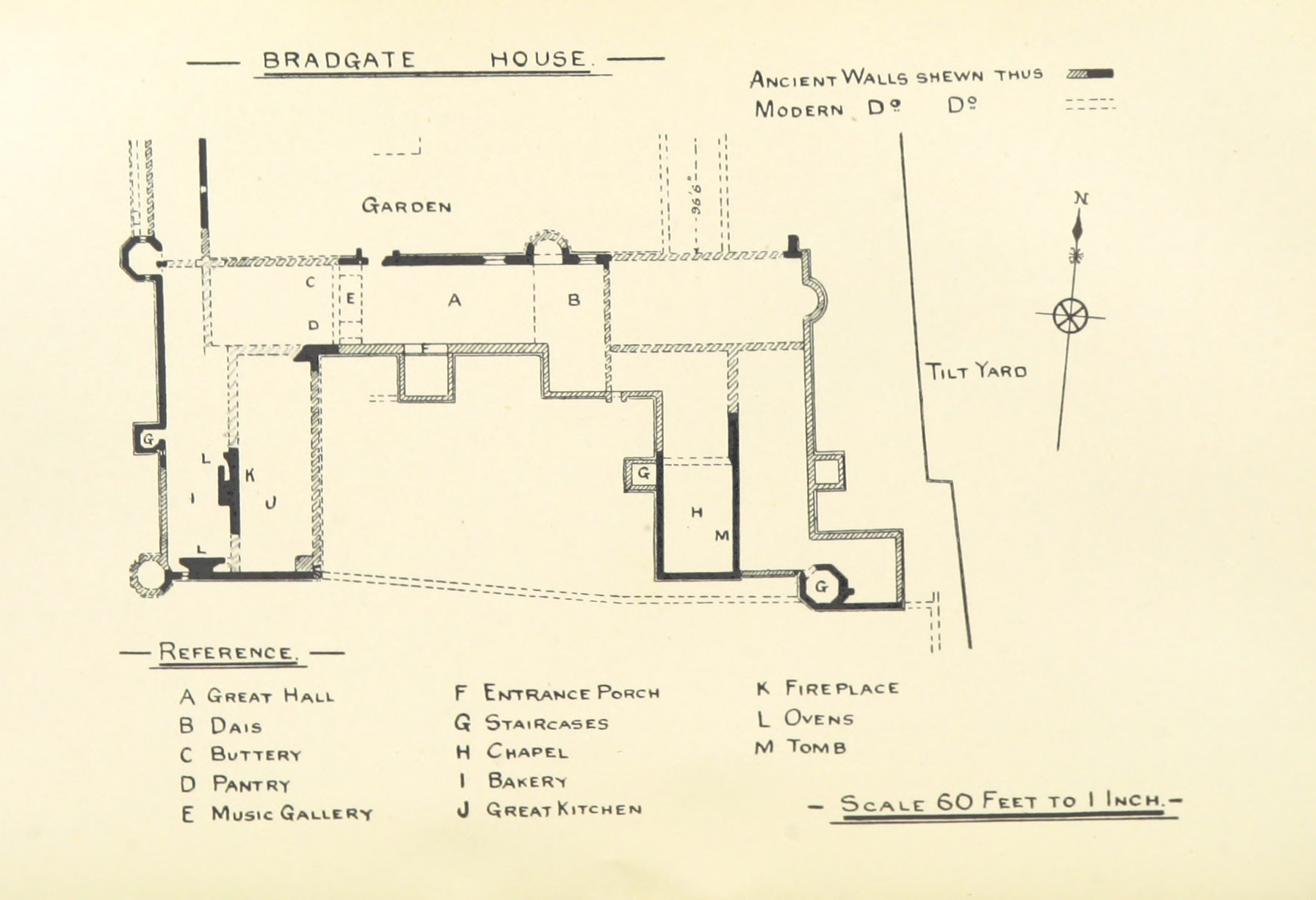
‘The house consisted of two wings joined together on the north side by the building of the great hall, which must have been eighty feet long by about thirty feet in width. The hall was wainscoted and lighted by large windows on each side and had an open-timbered roof. At the east end, adjoining the wing which contained the private apartments of the family, was the dais or raised platform upon which stood the table where the Marquess and his family sat at their meals. To his right hand was a bay window looking into an enclosed garden at the back, and to his left stood the sideboard loaded with the silver cups, tankards and plate which were used at his table.
The bay window and the recess at the end of the table afforded to the family partial privacy which was all that the manners of the time required. A wood fire probably burned upon a hearth in the middle of the hall and the smoke found its way out through a louvre in the roof. In the wall at the lower end of the hall may still be seen the holes in which were inserted the joists which supported the floor of the music gallery. The meals of noblemen were always enlivened by music — ‘Fro Kechene came the fryst course, With pipes and trumps and tabours.’
The wainscot was continued round the end of the hall under the music gallery. Beneath the gallery was a passage, reached from the hall by two doors, and beyond were the buttery and pantry with the kitchen and bakery, which occupied the western wing of the house. Close to the music gallery was a door with a porch opening from the hall into the enclosed garden at the back. The large cellar required for the storage of the food of such a household extended beneath the floor of the great hall and towards the west.
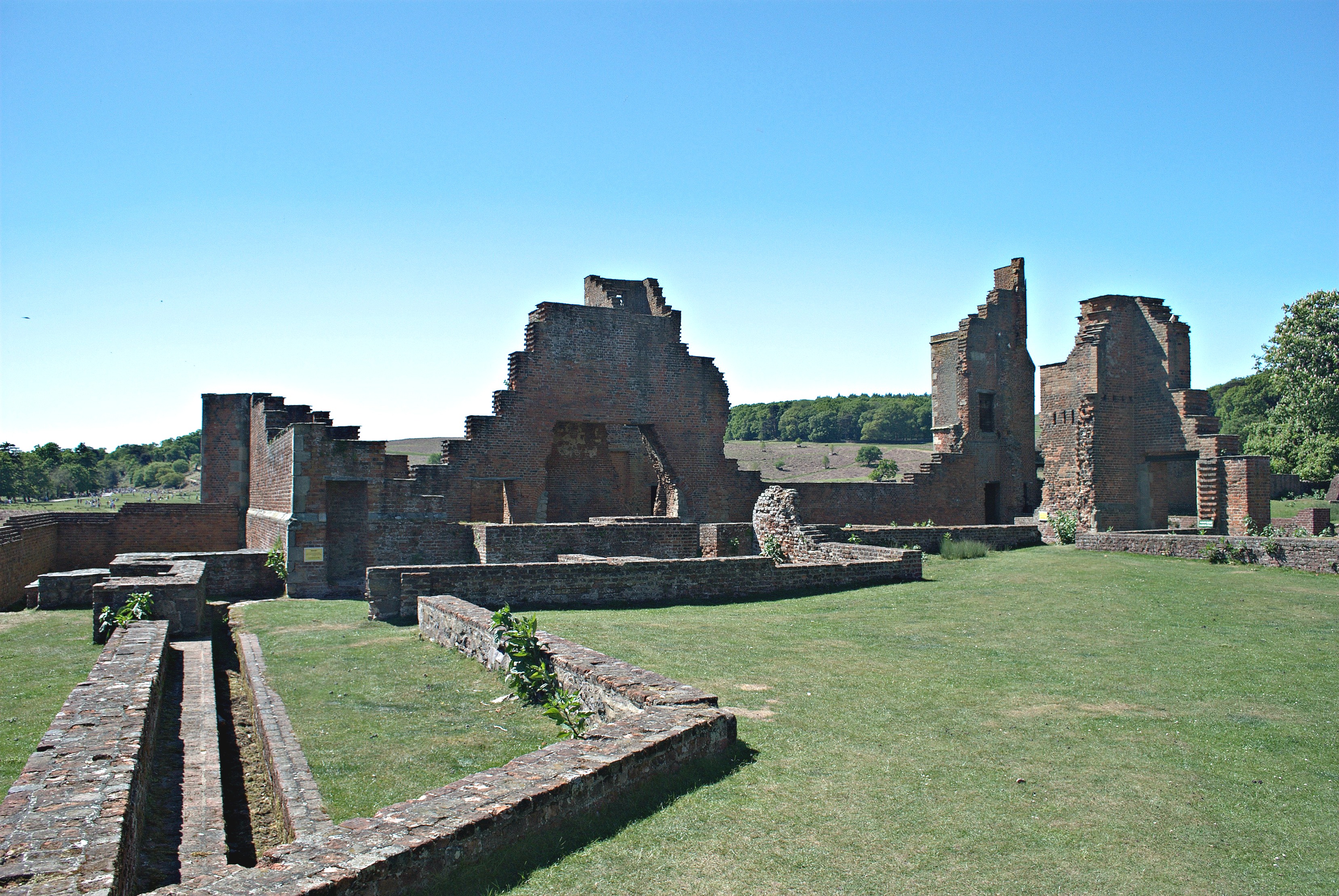
Looked at from the front, the house measured about 200 feet from the extreme eastern corner of one wing to the western corner of the other. The front of each wing was about 50 feet wide and was roofed in two spans and presented two very effective upright gables to the front. Then, set back about 60 feet from the front of the two wings and joining them together, was a long building containing the entrance hall with its side door, and the large common hall and porch…
The western wing was occupied by the principal kitchen, probably open to the roof, with its great roasting fireplace 15 feet wide, which is still standing. Behind this was the bakery, with so many ovens in it as to suggest that a considerable part of the food consumed in the house was baked. The two stories and garrets over this secondary kitchen contained no doubt the chambers of the domestics.
The opposite, and eastern, wing of the house comprised the chapel and private apartments of the family. There is a curious projection that contained a staircase, attached to the west wall of the chapel. The chapel has been so much defaced that it is difficult to guess how it was originally arranged. We are told that it opened out of the dining room. It probably had a gallery reserved for the use of the family, access to which was gained by a staircase of which we see the remains. The long, narrow building, to the north, forming one side of the garden in the rear of the house, contained no doubt a kitchen and other offices added to the house when fashion ceased to compel the family to dine with the rest of the household in the common hall.’
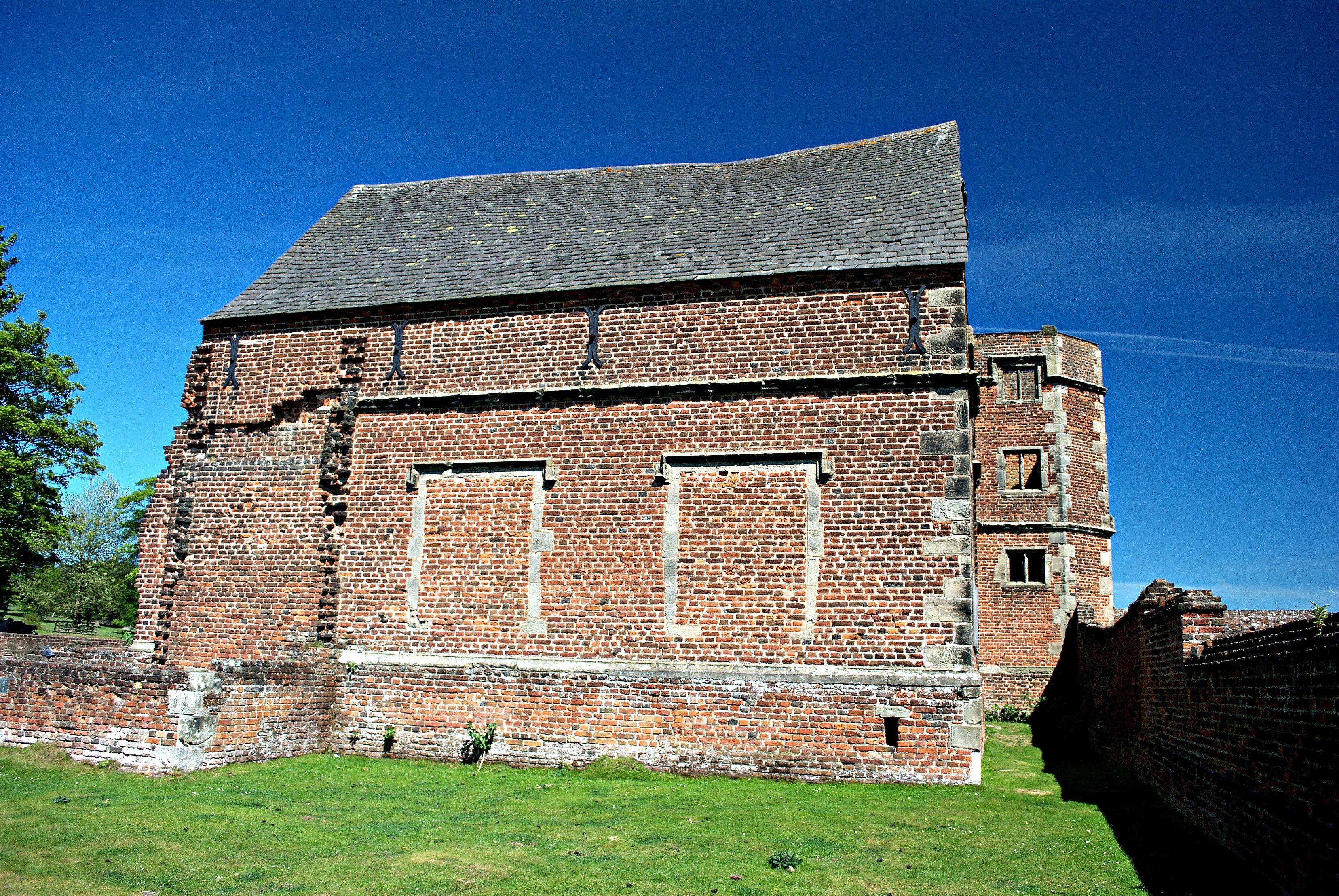
As we might expect, the east range, containing the family privy apartments, had the best view out of its fine, mullioned windows. It overlooked the large, formal garden with a raised parterre running around its perimeter. This feature is clearly evident today structurally, although the delicate English garden has long since been lost. The elevated walkway allowed those enjoying the outdoor space to look down upon and enjoy the full impact of the garden below them and simultaneously get glimpses of the surrounding parkland. The whole area is now covered with grass.
Bradgate Park: The Childhood Home of Lady Jane Grey
The ruins of Bradgate sit so serenely amidst one of the finest and best-preserved medieval hunting parks in England that it is hard to imagine the drama which began to unfold here as thunder rolled around the throne in mid-sixteenth century England. With the dying embers of Henry VIII’s reign began the titanic struggle for the future religious landscape of England. Protestantism became firmly established under the young Edward VI, while those in power around him not only coveted personal wealth and status but an earnest desire to keep Catholicism at heel.
Through her blood, the young Lady Jane Grey became unwillingly embroiled first in Thomas Seymour’s’ personal family struggle for power with his brother, Protector Somerset, and later in those arising between Protestant and Catholic factions – and their figureheads. But let’s not rush ahead of ourselves!
Starting at the beginning, Jane’s relationship with Bradgate began several years before events would come to a head. Until recently, it was said that the great-granddaughter of King Henry VII and Elizabeth of York was born at Bradgate House in October 1537. However, modern historians, such as Eric Ives and Nicola Tallis, believe that this is incorrect – and that Jane was, in fact, born in London in the tumultuous year of 1536 – and most probably at Dorset House, in London.
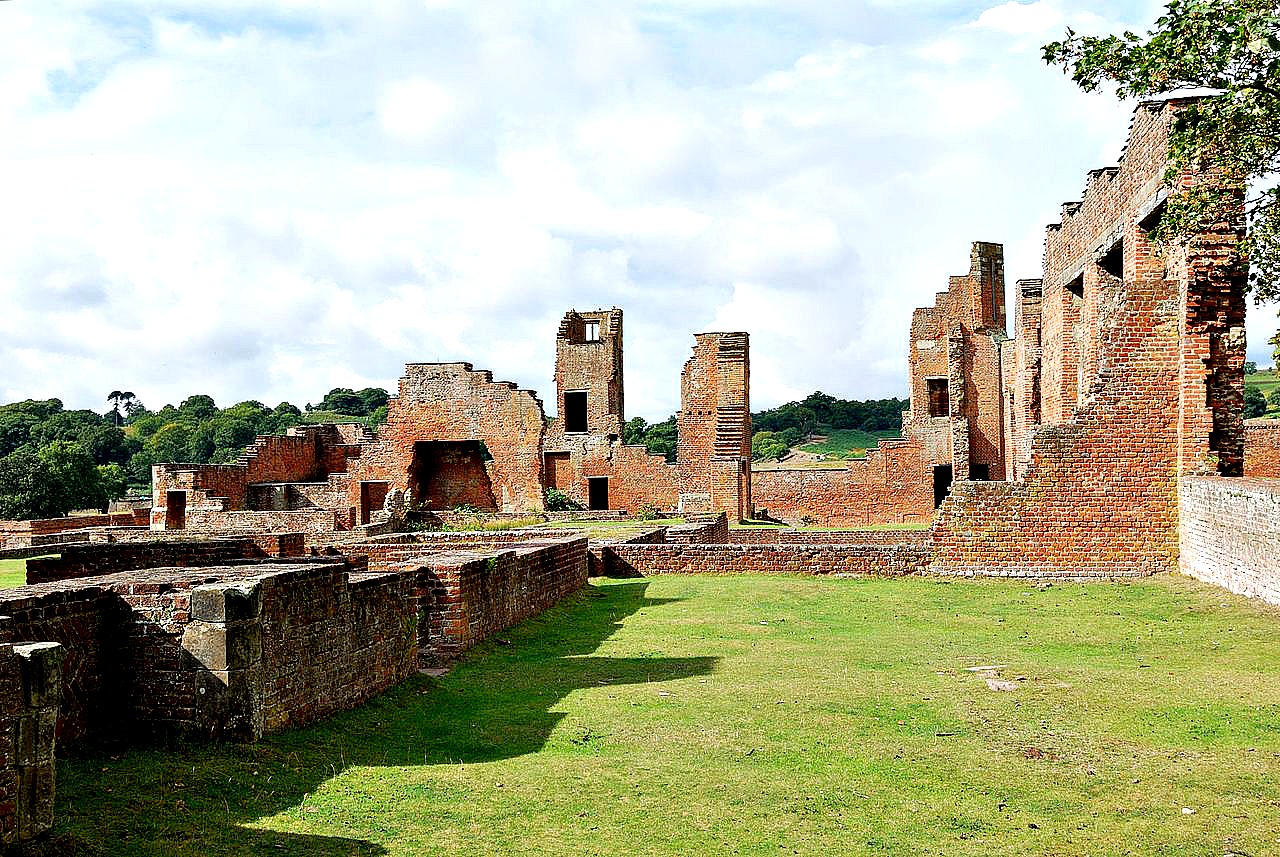
It seems that the Marquess and Marchioness of Dorset did not move to Bradgate until Jane was almost two years old in 1538. It was at this time that her association with Bradgate most likely began. Jane certainly spent a good deal of time at Bradgate through her childhood, where she was ruled with an iron fist – as we shall hear shortly. With Henry VIII’s death, life in rural Leicestershire was about to change for this quiet, good-natured child.
Negotiations between the Marquess of Dorset and Sir Thomas Seymour resulted in Thomas acquiring the wardship of Jane in early 1547, shortly after Henry’s demise. The deal was that in return for £2000 paid to Lord Admiral Seymour, he, in turn, would work diligently to secure her marriage to the boy king, Edward. This would bring the Dorsets into the inner circle of the royal family. It would be the perfect Protestant match, and with it would come immeasurable status and influence for all concerned.
With the agreement sealed, Jane must have ridden away dutifully from Bradgate Park, through the south-facing gates of the manor, along the cobbled track towards Anstey, and then on to London. She was destined to take up residence with Sir Thomas, who soon thereafter married the dowager queen, Katherine Parr. Both Katherine and the young Lady Jane were fiercely intelligent, learned, obsessed with books, and devoutly Protestant in their religious inclinations. Given what we know of Jane’s harsh upbringing by unforgiving parents, her all too brief time with Katherine, first at Chelsea Manor, then Sudeley Castle, must have seemed like paradise.
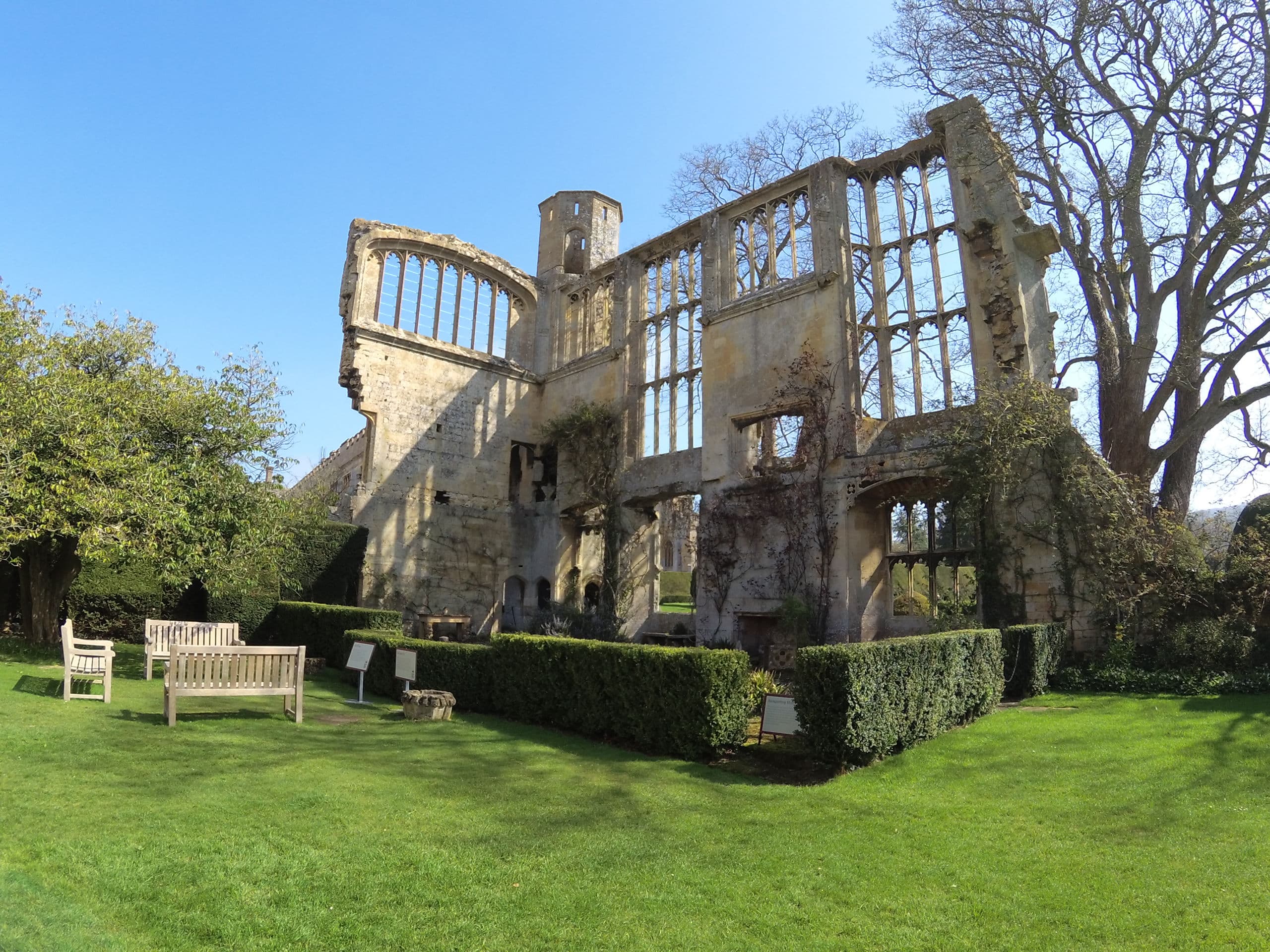
Unfortunately for Jane, this idyll was not to last; with Katherine’s death following childbirth on 7 September 1548, the Dorsets recalled their daughter, feeling it unseemly that she should live on with a man with a reputation like Seymour’s. Of course, the letter requesting Jane’s return, ostensibly so that her mother could keep an eye on her, was most tactfully written. It was signed by ‘Brodgate’ on 19 September 1548, just 12 days after Katherine’s death. In it ‘Henry Dorsett’ writes:
‘I shall in most hearty wise require your lordship, to commit her to the governance of her mother, by whom for the fear and duty she oweth her, she shall most easily be ruled and framed towards virtue, which I wish above all things to be most plentiful in her.’
After acting as chief mourner at the funeral, Jane returned to Bradgate a few days after receiving this letter, ‘under the escort of Mr Rouse the house-steward, and of Mr Harrington’. She was around 11 or 12 years old by this time. In October, Seymour visited Bradgate in a renewed attempt to persuade the Dorsets to send Jane again to live within his household. This time, he was successful, and with another payment, this time for £500, Jane would once again leave Bradgate, returning to live with Seymour’s mother. Here, she remained for only a couple of months until Sir Thomas was arrested for treason.
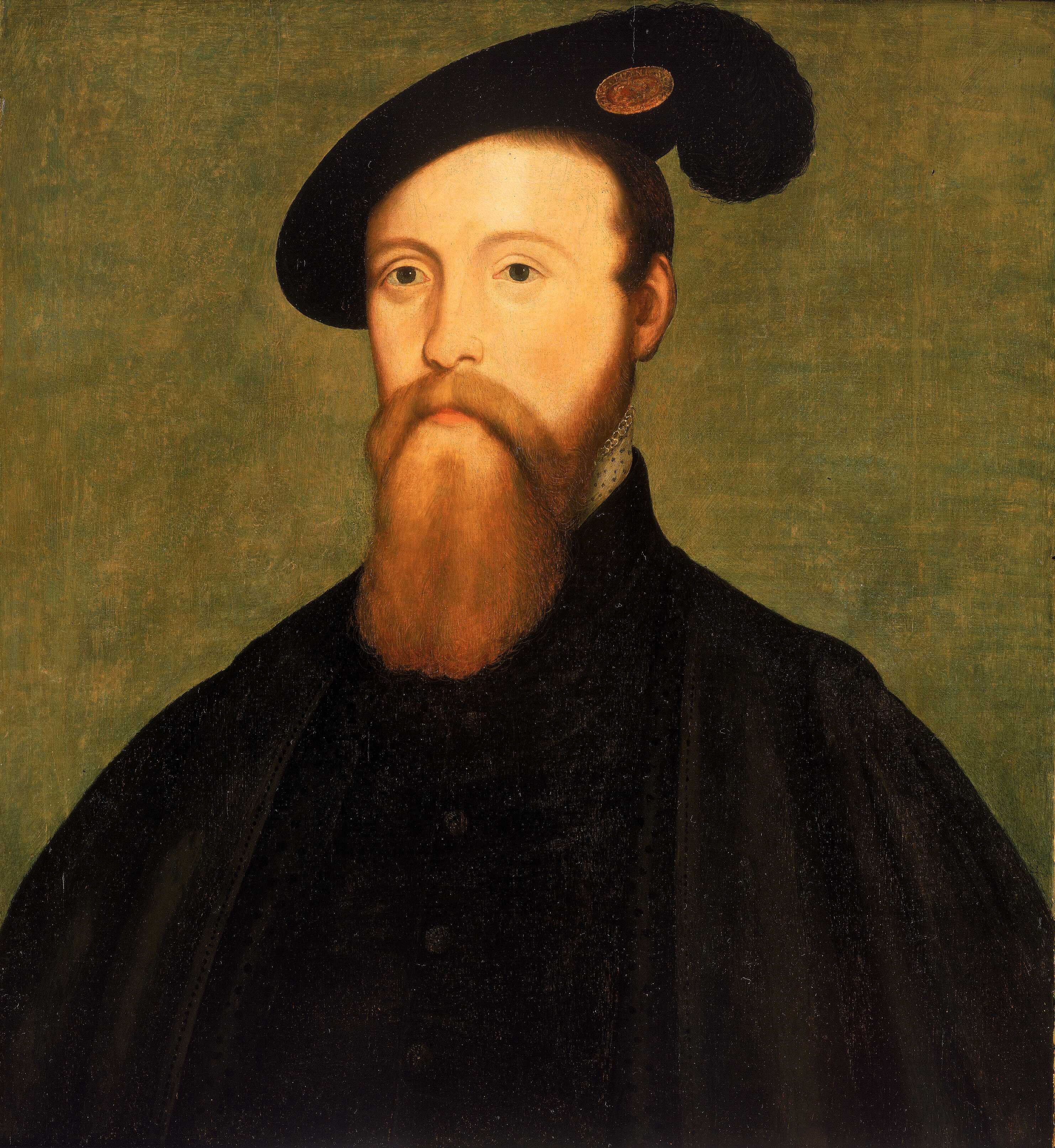
And so plans to manoeuvre Jane onto the throne as Edward’s bride came very abruptly to an end. One imagines that the Dorsets kept their heads down on their country estate while the dust settled following Seymour’s execution in March 1549. Goodness knows how Jane must have been feeling: escaping her harsh home environment the first time, only to lose a much-beloved mother figure, then passed back and forth between households, before finally hearing the end of a man described by Princess Elizabeth as having ‘much wit and little judgment’.
In 1550, when Jane was around 13 or 14, we have one of the most touching records of her young life and time at Bradgate House. It comes from Roger Ascham, Princess Elizabeth’s schoolmaster. He records, in detail, a meeting with Lady Jane in her chamber (presumably in the east wing) during his visit to the house. Although quite lengthy, it is so revealing of the life Jane knew at Bradgate – both the joys of learning and the pain of the ‘hell’ she endured under her parents’ rule – that it is worth reproducing in full.
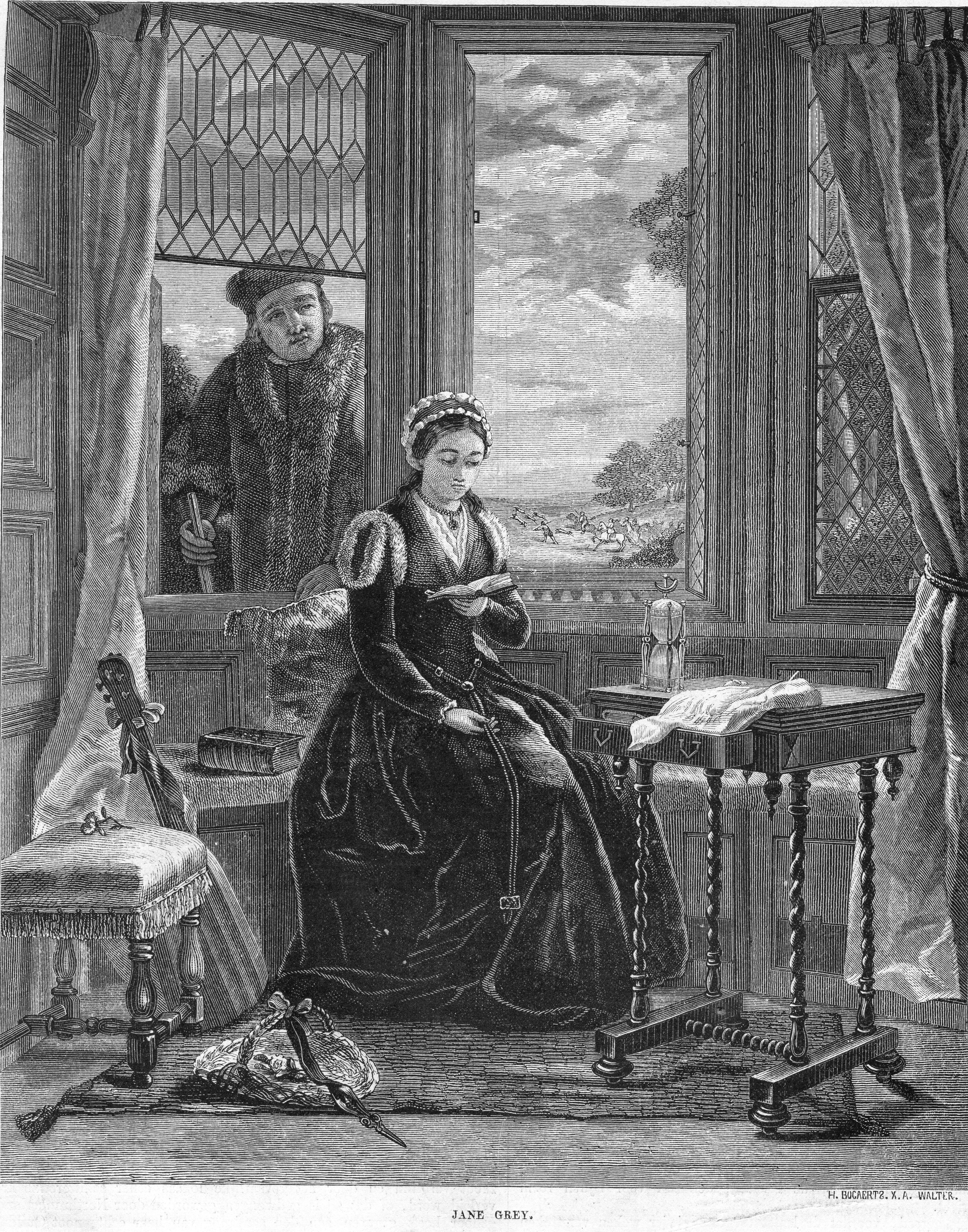
‘Before I went into Germany, I came to Bradgate in Leicestershire, to take my leave of that noble lady Jane Grey, to whom I was exceeding much beholden. Her parents the Duke and Duchess, with all the household, gentlemen and gentlewomen, were hunting in the park. I found her in her chamber reading the Phædo of Plato in Greek, and that with as much delight as some gentlemen would read a merry tale in Boccaccio.
After salutation and duty done, with some other talk, I asked her, why she would lose such pastime in the park? Smiling she answered me that all their sport in the park is but a shadow to that pleasure that I find in Plato. Alas good folk, they never felt what true pleasure meant — ‘And how came you madam,’ quoth I, ‘to this deep knowledge of pleasure, and what did chiefly allure you into it, seeing that not many women, but very few men, have attained thereunto?
‘I will tell you,’ quoth she, ‘and tell you a troth, which perchance ye will marvel at. One of the greatest benefits that ever God gave me, is, that he sent me so sharp and severe parents, and so gentle a schoolmaster. For, when I am in presence either of father or mother, whether I speak, keep silence, sit, stand, or go, eat, drink, be merry, or sad, be sewing, playing, or dancing, or doing anything else, I must do it, as it were, in such weight, measure and number, even so perfectly as God made the world; or else I am so sharply taunted, so cruelly threatened, yea, presently sometimes with pinches, nips and bobs, and other ways, (which I will not name for the honour I bear them), so without measure misordered, that I think myself in hell, till the time come that I must go to Mr. Aylmer, who teacheth me so gently, so pleasantly, with such fair allurements to learning, that I think all the time nothing whiles I am with him. And when I am called from him, I fall on weeping, because whatsoever I do else but learning, is full of grief, trouble, fear, and whole misliking unto me.
And thus my book, has been so much my pleasure, and bringeth daily to me more pleasure and more, that, in respect of it, all other pleasures in very deed, be but trifles, and troubles unto me.’ I remember this talk gladly, both because it is so worthy of memory, and because also it is the last talk that ever I had, and the last time that ever I saw that noble and worthy lady.”
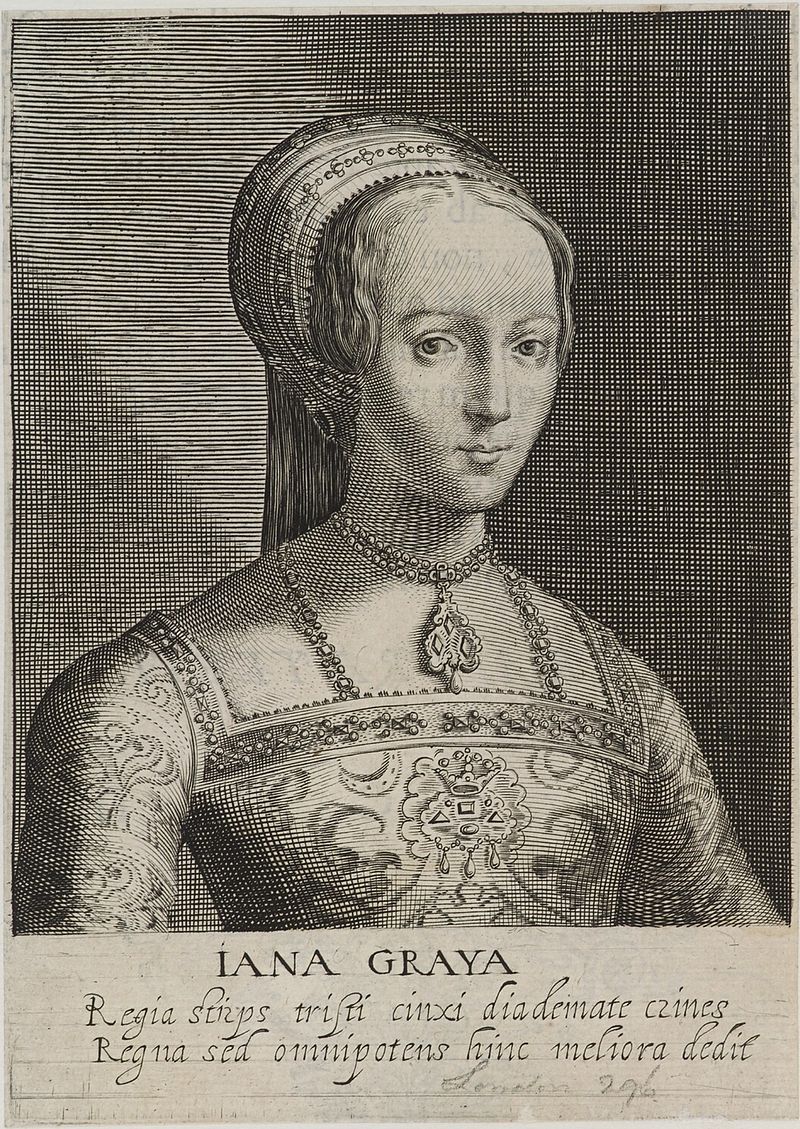
In 1552, the new Duke and Duchess of Suffolk relocated the family’s power base to London, in Sheen, close to the royal court. Here, they might more easily implement their ambitious plans. In an alliance with the Duke of Northumberland, Jane was first wed into a family she came to detest before the sixteen-year-old was forced to accept the Crown following the death of Edward VI. Her fate is well-known; her husband, father and father-in-law all going to the block alongside her under the rule of the new Catholic queen, Mary I.
As a result of the botched coup, the Greys’ estates were forfeited to the Crown. However, Bradgate House was eventually returned to the family during the reign of James I, when the son of Lady Jane’s uncle, Sir John Grey of Pirgo, was created Baron Grey of Groby. He moved back to the park. The house was visited by royalty in 1696, but in 1739, it was finally abandoned and boarded up. With no one to care for the building, first, the weather, then locals removing materials from the site, accelerated the decline and ultimate ruin of a great Tudor mansion, once home to an innocent child murdered by her parents’ ambition.
Visitor Information
Bradgate House is to be found in Bradgate Park, just outside Leicester. The park is open to the public throughout the year during daylight hours. According to Antony Emery, in his Greater Medieval Houses of England and Wales, the park is one of the country’s most unspoilt medieval hunting grounds. It is still stocked full of red and fallow deer, which you will likely encounter if you visit the park today. They are so used to visitors that they tend to rest imperiously undisturbed by human presence, tolerating having their photos taken by enchanted onlookers – remember, they are wild, though, so do not get too close.
From the main car park at Newtown Linford (note there are several entrances, but the main one is the easiest to find), a pretty little brook runs through the park at the bottom of a valley, leading you toward the ruins of the house.
At the height of summer, on a sunny afternoon, it feels like half of nearby Leicester has decamped to the Bradgate. Still, if you are prepared to walk away from the main footpath uphill along smaller tracks that crisscross through the bracken, you can find your space – and enjoy wonderful views of the park and ruins.
It is possible to see the ruins easily from the park during daylight hours, but they are walled off and inaccessible, except on certain viewing weekends throughout the year, when guided tours also run. Although no dates are currently listed, this seems to be the place to check in advance for opening times.
There are plenty of places to picnic or find something to eat and drink, including a cafe by the car park. Other tea rooms and pubs can be found in the nearby village.
Sources:
The History of the Country Houses of Leicestershire and Rutland by Kairos Press
Bradgate Park: Childhood Home of Lady Jane Grey by Joan Stevenson Anthony Squires (Kairos Press)
Bradgate House and the Greys of Groby: A sketch of their history, by John D. Paul

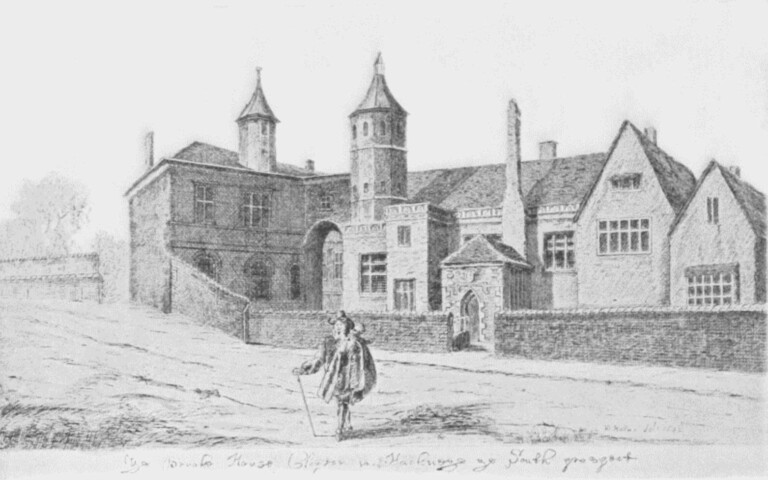
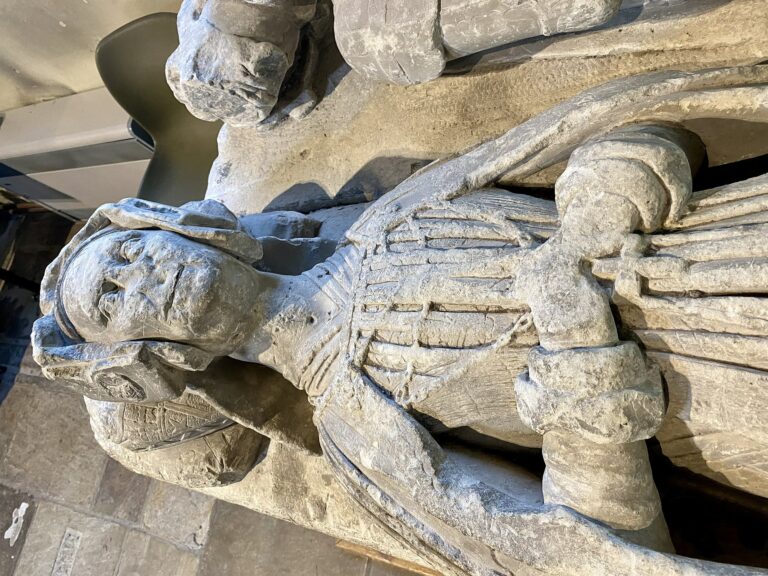
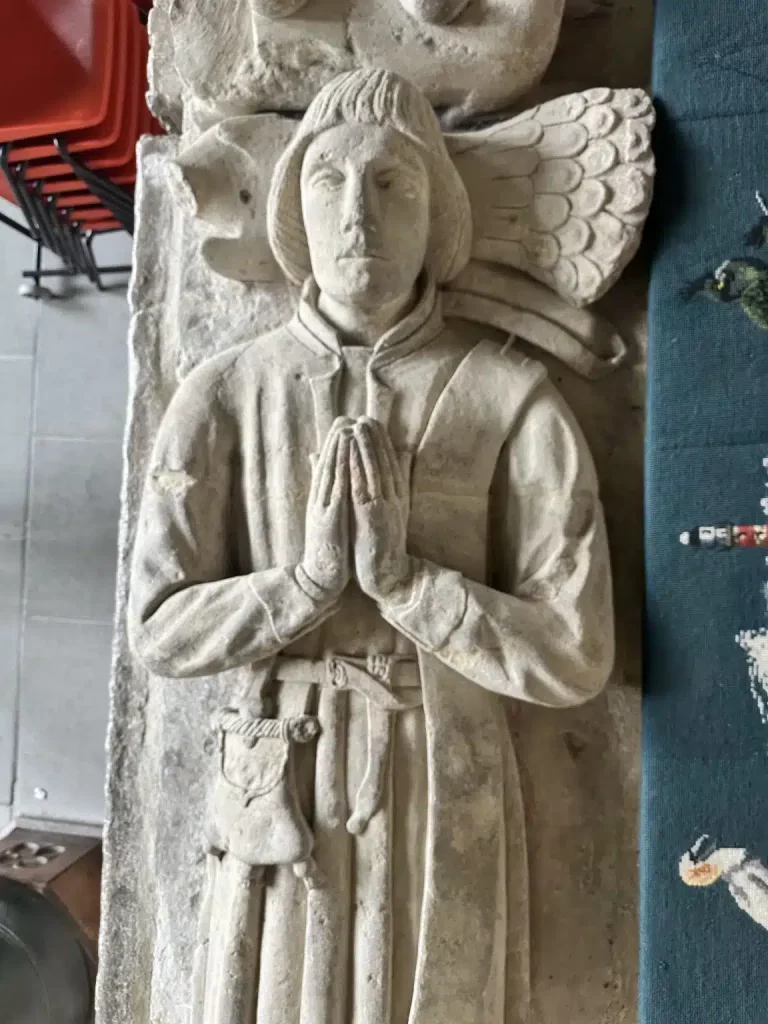
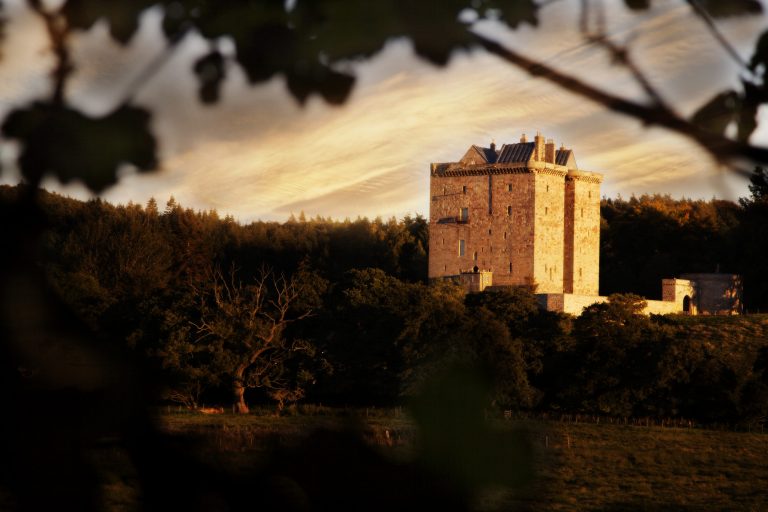
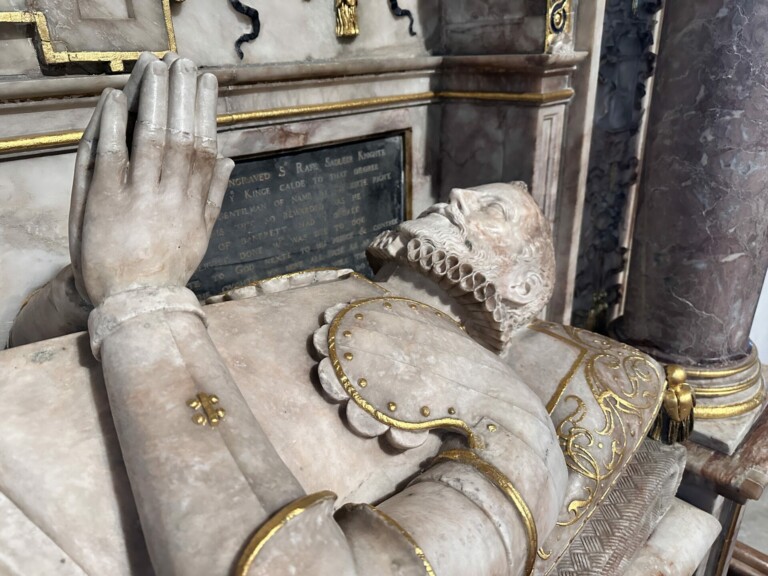
One Comment